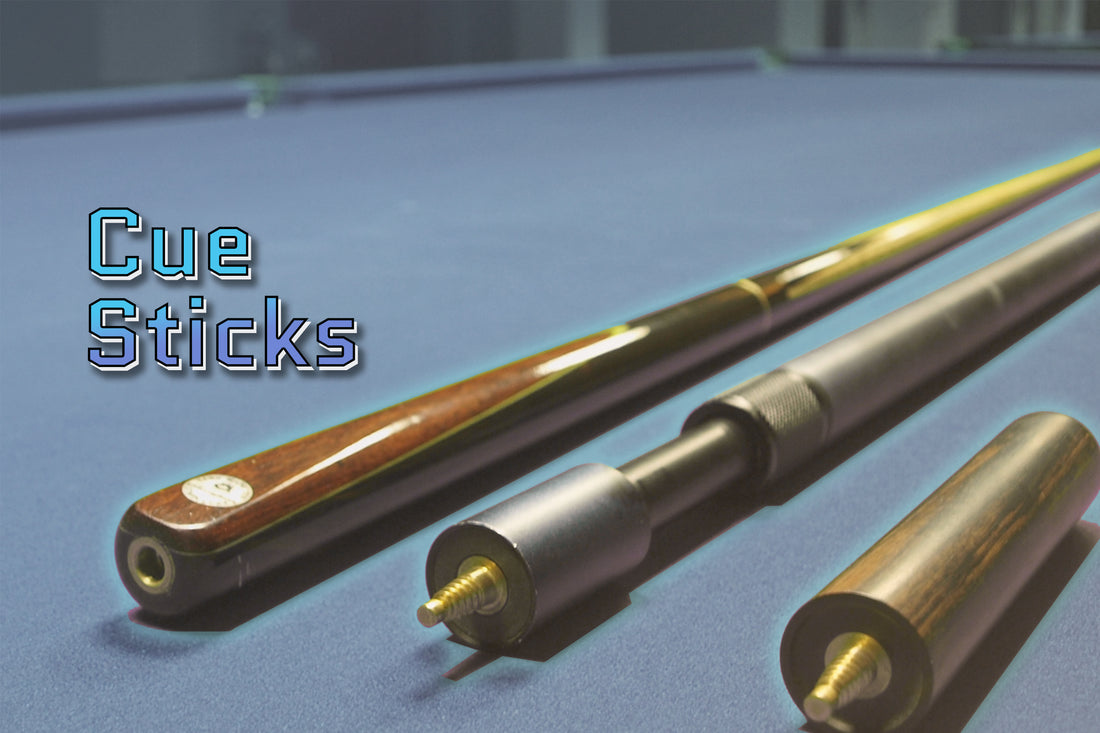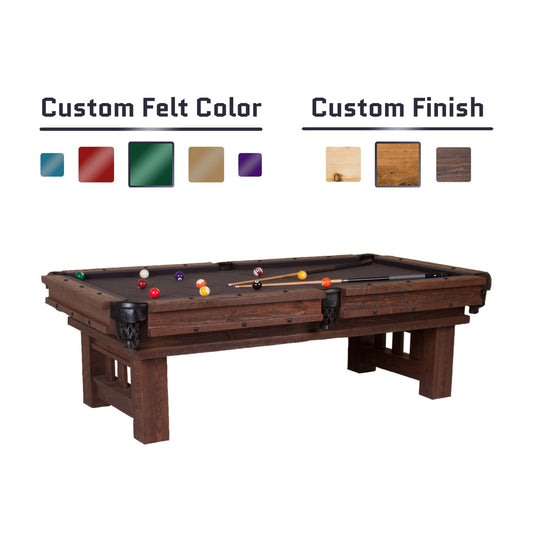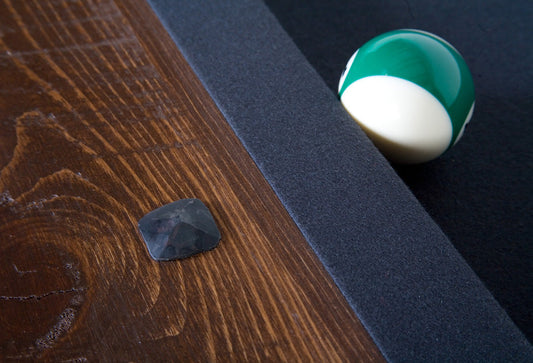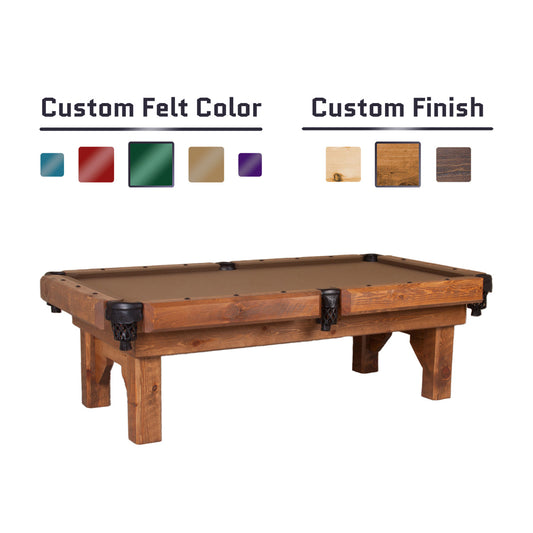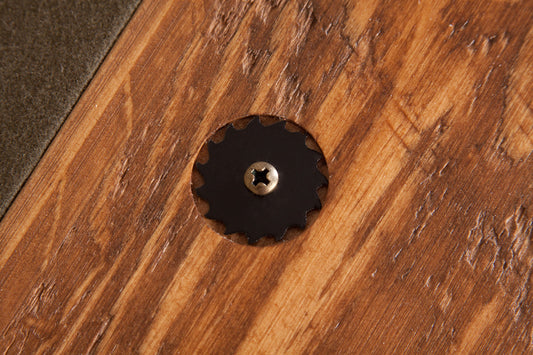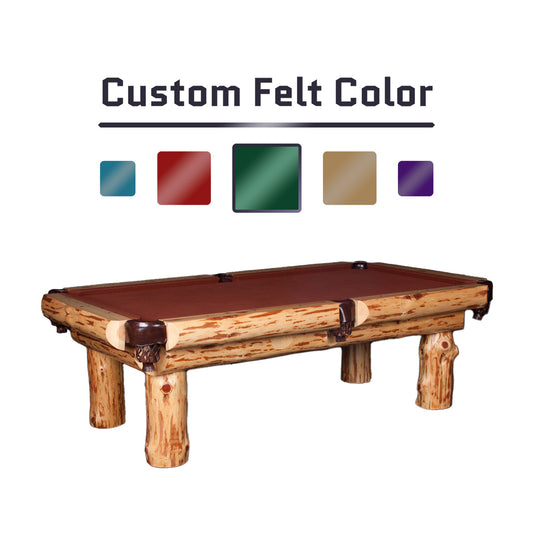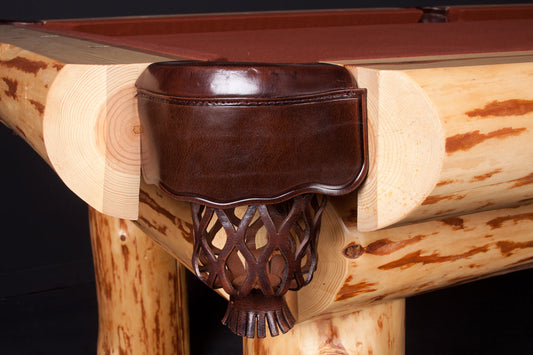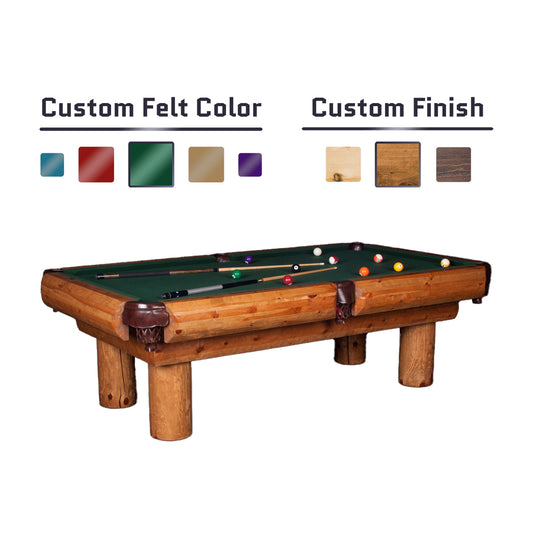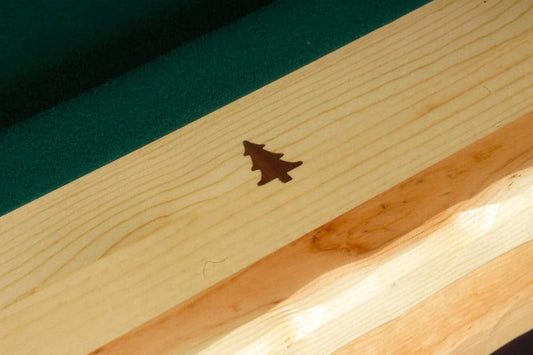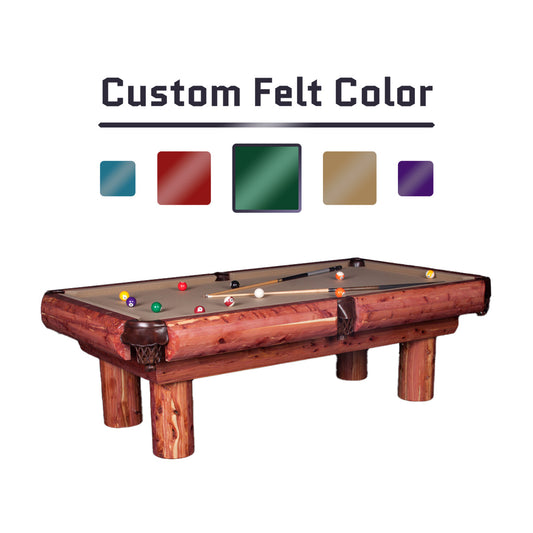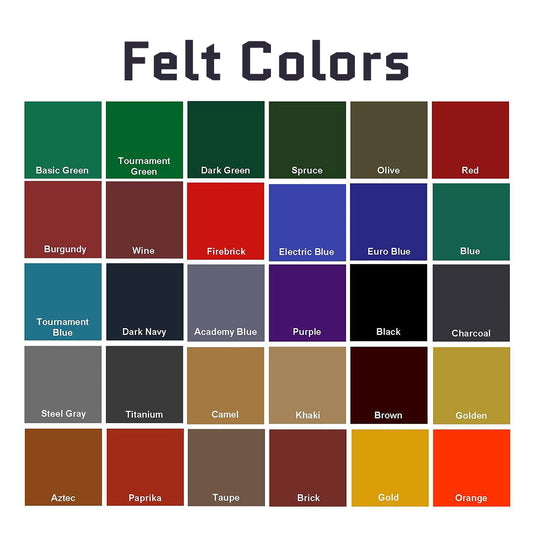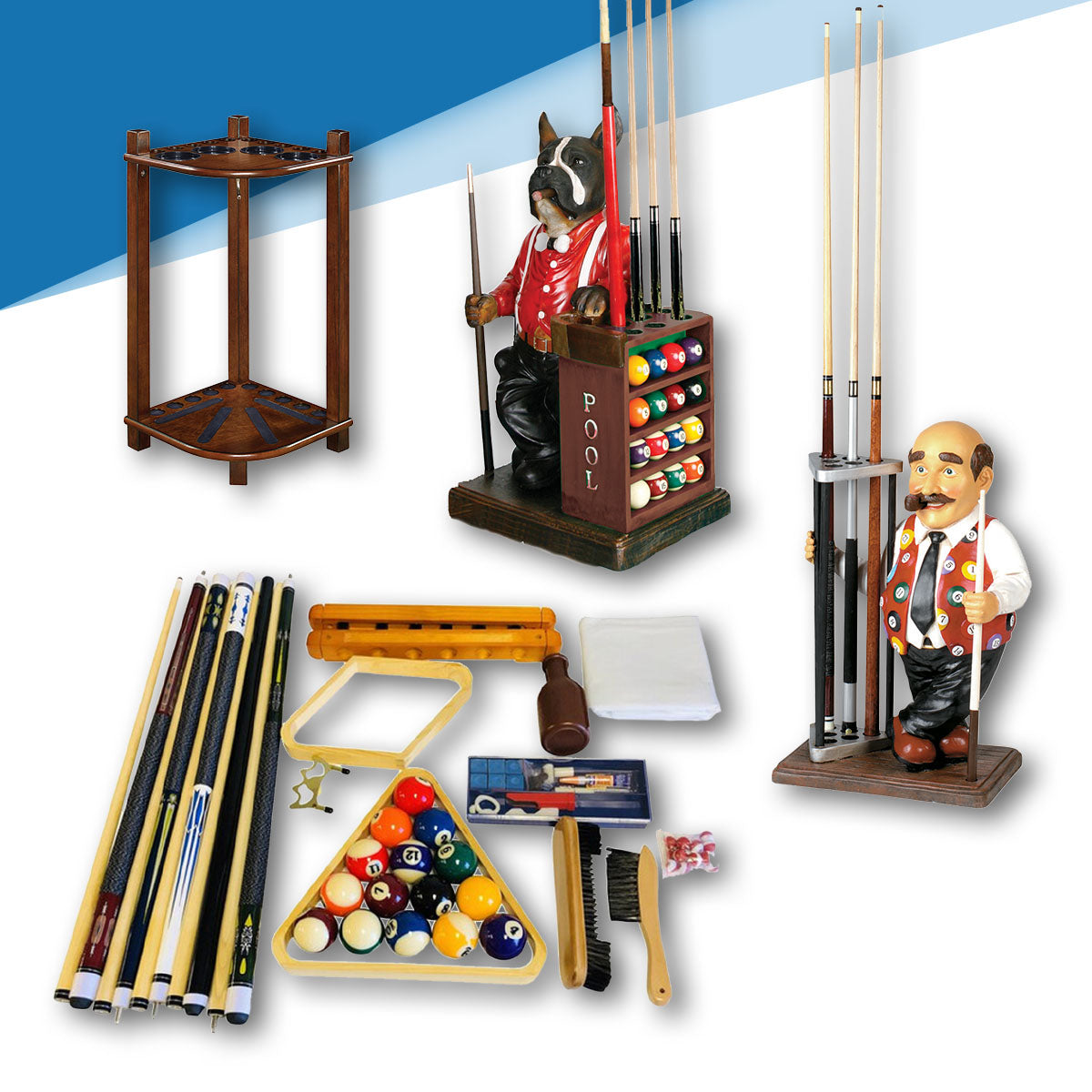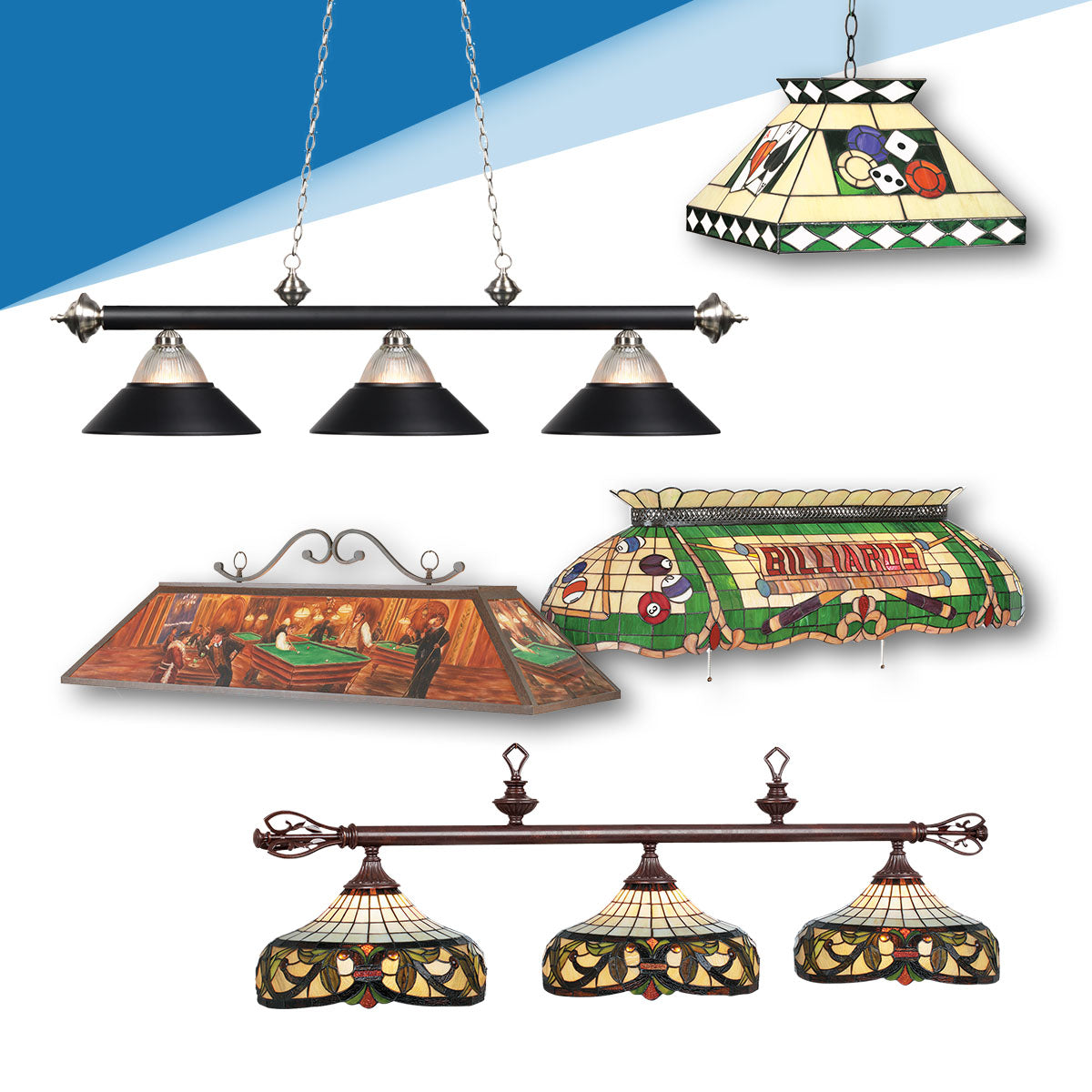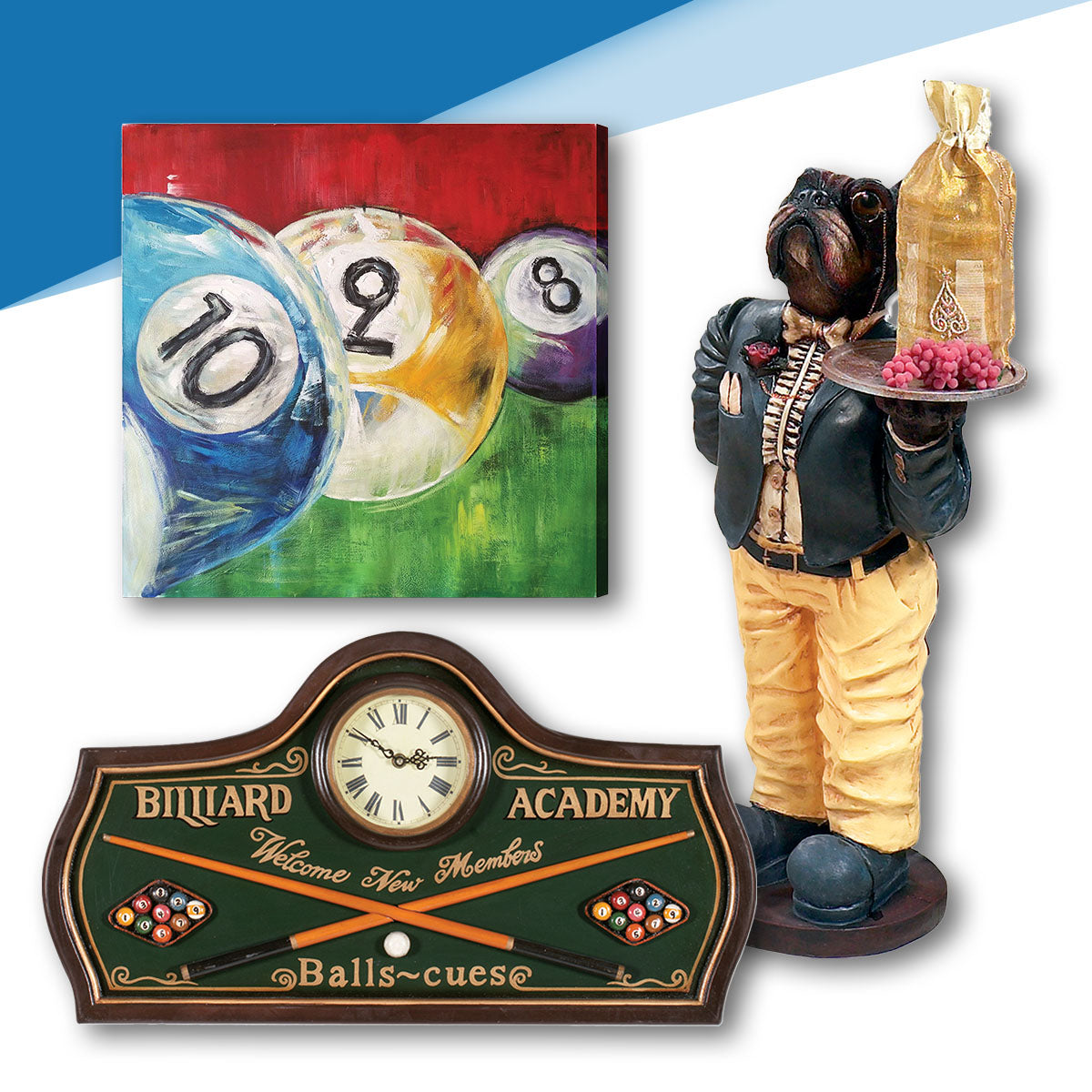Written by Daddy Cappuccino
7-minute read
Picture this: a dimly lit room, the sound of chalk meeting leather, and the satisfying crack of balls colliding. You're at a billiards hall, and at the heart of the action, resting in a cue rack brimming with personality, is the cue stick – your trusty companion in the game of pool, snooker, or carom billiards.
In the world of cue sports, the cue stick, often simply referred to as a cue, is not just an accessory; it's a precision instrument, the extension of a player's skill and finesse. This article is your guide to understanding every facet of this iconic sporting equipment, from the tip of the shaft to the end of the butt.
Let's embark on a journey into the intricate world of cue sticks, exploring their types, anatomy, and the art of choosing the perfect one for your game.
Table of Contents
1. Types of Pool Cues
In the world of cue sports, your choice of cue stick can be as unique as your playing style. Understanding the different types of pool cues is key to finding the one that feels like an extension of yourself.
- One-Piece Pool Cues: These cues are the workhorses of the pool hall. They are usually found in communal pool halls and bars, designed for durability and easy maintenance. With a consistent taper from butt to tip, one-piece cues are straightforward and reliable, making them ideal for beginners and casual players.
- Two-Piece Pool Cues: If you're a player on the move, a two-piece cue might be your best bet. These cues can be separated into two parts, making them convenient to transport in a cue case or pouch. They often feature a joint that's located three-quarters down the cue, known as a "three-quarter two-piece," which is favored by snooker players.
- Specialty Cues: For those who crave precision in their shots, specialty cues come into play. Break cues, for example, are designed with tips made from hard materials like phenolic resin to maximize the force during a break shot. Jump cues are shorter and lighter, making those legal jump shots a breeze. And for the trick-shot artists, there are cues tailored to specific shots, often with multiple sections for weight adjustment.
- Snooker Cues: If you're more into snooker, your cue will have some distinctive features. Snooker cues are typically shorter than their pool counterparts, designed for the precision required in snooker. They often come with detachable butt extensions to accommodate different shot requirements. Snooker cue tips are smaller in diameter, ensuring accuracy and finesse with snooker balls.
- Artistic Cues: For the maestros of artistic billiards and pool, a collection of cues awaits, each tailored to a specific trick shot. These cues can number twenty or more and are essential for creating those jaw-dropping shots that leave spectators in awe.
- Sneaky Pete Cues: A sneaky pete cue is a unique breed. It appears to be a simple, one-piece house cue but is actually a high-quality two-piece cue with an almost invisible wood-to-wood joint. These cues are often used by hustlers looking to temporarily deceive their opponents.
As you step up to the table, consider your playing style, preferences, and the type of cue sports you enjoy. Your cue stick is your partner in the game, and finding the right one can make all the difference. So, take your time, explore the options, and let your cue become an extension of your skill and style. In the world of pool cues, there's a cue for every player and every shot.
2. Anatomy of a Pool Cue
Now that we've explored the diverse world of pool cue types, it's time to take a closer look at the anatomy of a pool cue. Understanding the different parts of your cue stick is essential, whether you're a novice player curious about "what is a pool cue" or someone pondering "how long is a pool cue."

- Shaft: The shaft is the long, slender part of the cue, typically made from straight-grained hard rock maple wood. It's where the action happens, as this is the portion you'll use to strike the cue ball. Shafts come in various tapers, with the two most common being the pro taper and the European taper. The pro taper maintains the same diameter from the tip to about 12 to 14 inches toward the joint before it begins to widen. In contrast, the European taper widens continually and smoothly from the ferrule toward the joint.
- Tip: At the end of the shaft, you'll find the tip, and it plays a crucial role in your game. The tip is typically made of leather and varies in diameter, usually ranging from 9 to 14 millimeters. The size of the tip affects how you strike the cue ball and the amount of spin you can impart. Some players prefer rounder tips as they make it easier to apply spin, while others opt for flatter tips, often made of harder materials like phenolic resin, for powerful shots with less spin. If you're looking for more detailed information about cue tips, including how to choose, replace, and maintain them, we've explored this topic extensively in a prior article.
- Ferrule: Just above the tip is the ferrule, a cuff-like component often made of carbon fiber, melamine resin, or phenolic resin. It serves two important functions. First, it holds the cue tip securely in place. Second, it absorbs much of the impact with the cue ball to prevent the shaft wood from splitting. While ferrules were historically made of ivory, modern cues utilize more durable materials.
- Joint: The joint is the point where the two parts of a two-piece cue connect. It's where the butt and shaft meet. Joints are made of various materials, including plastic, brass, stainless steel, or wood, with brass and steel being popular for their stability in response to temperature changes. Some modern cues feature quick pin release connections, making assembly and disassembly faster.
- Butt: The butt is the thicker, heavier part of the cue, often inlaid with exotic woods, mother of pearl, or other decorative materials. The bulk of the cue's weight is in the butt, and it plays a significant role in determining the balance and feel of the cue. How the weight is distributed in the butt affects your shot control and power.
- Bumper: The bumper might seem like a minor component, but it's essential for protecting your cue. Made of rubber for pool cues and leather for snooker cues, it prevents the cue from cracking when it rests on the ground or accidentally contacts a wall or table. It also impacts the feel of the cue when striking the cue ball, adding to the overall experience.
When you pick up a pool cue, you're not just holding a stick; you're wielding a finely crafted instrument designed for precision and control. The combination of these key components, from the shaft and tip to the bumper and butt, makes each cue unique. Finding the right cue for your game means understanding how these elements work together to enhance your performance on the table.
3. How to Choose a Pool Cue
So, you've decided to take your cue game to the next level, or maybe you're just starting out and want to make your first serious cue stick purchase. Choosing the right pool cue is a bit like selecting a wand in the wizarding world – it has to feel just right in your hands. Here's a breakdown to guide you through the process.
1. Determine Your Playing Style
First, think about your preferred cue sports and playing style. Are you a pool shark who loves sinking balls with precision, a snooker enthusiast aiming for the perfect break, or a carom billiards pro looking to improve your game? Each cue type is designed with specific games in mind.
2. Cue Length Matters
The length of your cue should complement your height and arm length. For most adults, a standard cue measuring around 57-59 inches (1.5 meters) works well, but variations exist to suit different player profiles. Snooker players, for example, often opt for slightly shorter cues.
3. Cue Weight
Cue weight plays a significant role in your shot control. The average cue weighs between 16 to 21 ounces (450-600 grams), with 19 ounces (540 grams) being a popular choice among professionals. However, your ideal weight depends on personal preference. Heavier cues can provide more power, while lighter ones offer greater finesse.
4. Cue Materials
Cues are traditionally made of wood, usually hard rock maple for pool cues and ash for snooker cues. However, modern cues may incorporate materials like graphite, carbon fiber, or fiberglass in the shaft. These materials can offer enhanced durability and performance, but the classic feel of wood remains popular.
5. Cue Taper
The taper of the cue shaft matters. A conical taper gradually narrows from the joint to the tip, while a "pro" taper maintains a straighter shape, flaring out only near the end. Your choice here impacts the cue's feel during play.
6. Customization
If you're truly dedicated to your game, consider investing in a custom cue. Custom cues can be tailored to your exact specifications, allowing you to choose the wood, design, weight, and other elements that match your unique playing style.
7. Budget
Last but not least, set a budget for your cue. While there are cues available for every price range, remember that a cue is a long-term investment in your game. A well-crafted cue can last a lifetime with proper care.
4. Conclusion
Congratulations! You've taken a deep dive into the world of pool cues, from understanding the anatomy of these remarkable tools to becoming proficient at choosing the perfect one for your game.
Whether you're into pool, snooker, or carom billiards, your cue should align with your game of choice. The cue's length, weight, materials, and taper must harmonize with your physique and playing style. Custom cues offer a personalized touch, and while considering your options, keep budget in mind.
Now, armed with this knowledge, head to the billiards hall with confidence. Your cue stick is not just a tool; it's an extension of yourself on the green baize battlefield. So, rack 'em up, chalk your cue, and let the games begin. May your shots be accurate, your breaks powerful, and your victories numerous. And remember, it's not just about the cue; it's about the player wielding it.
🍻 Cheers to your billiards journey and see you in the next article!

